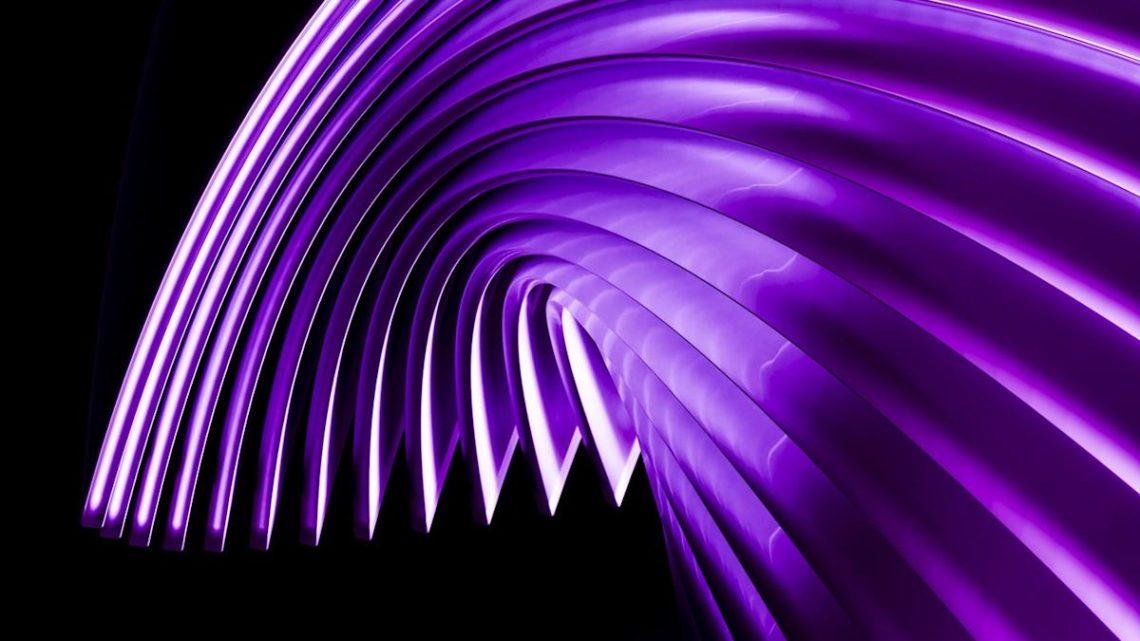“Hearst Magazines and Yahoo may earn commission or revenue on some items through these links.”
-
The human eye does not actually see purple, as purple is not a color on the visual spectrum.
-
Purple is a combination of wavelengths from opposite extremes of the spectrum, which technically deosn’t make any sense, but our brains evolved a solution.
-
When we “see” a combination of blue and red wavelengths, the brain bends the visual spectrum into a circle that joins blue and red at the point of purple.
You might be today years old when you realize there is no purple in the rainbow. There is no P in ROYGBIV.
But wait, what about violet? Well, despite what you may have come to believe, violet is not purple. In fact, violet (along with the rest of the colors in a naturally occurring rainbow) has something purple doesn’t—its own wavelength of light. Anyone who ever ended up with a sunburn knows violet wavelengths are real, as the Sun’s ultraviolet (UV) radiation is the reason you need to wear sunscreen, even though you can’t see those wavelengths (more on that later). Red, orange, yellow, green, blue, and indigo are all just as real.
But purple? Well, purple is just your brain’s way of resolving confusion.
That’s right. Red and blue (or violet) wavelengths are two opposite extremes on the spectrum. When you see both of these wavelengths in the same place, you eyes and brain don’t know what to do with them, so they compensate, and the clashing wavelengths register as the color we call purple. It doesn’t actually exist.
The visible light spectrum detectable by human eyes makes up only a small fraction of wavelengths (0.0035%, to be exact). Those colors are made available to us by millions of densely packed photoreceptor cells known as cones, which respond to light hitting our retina. We can only see colors that have wavelengths of the right sizes (between 350 to 750 nanometers) for our cones to respond to. That’s why we cannot make out UV or infrared light—UV wavelengths are too short for our cones to detect, and infrared wavelengths are too long.
Cone cells come in three flavors: short wavelength cones (S), medium wavelength cones (M), and long wavelength cones (L). Approximately 60% of cones are L cones that best absorb reddish wavelengths (as a result of the reddish pigments they contain), 30% are M cones that best absorb greenish wavelengths (and have greenish pigment), and 10% are S cones that best absorb bluish wavelengths (and have bluish pigment). All three types of cones can absorb numerous wavelengths close to their peak—though, that absorption gets weaker the farther you stray from the peak absorption wavelength—and overlap in their ability to detect colors like yellows and teals.
Cones do not actually see colors themselves, but they send electrical signals based on the wavelengths they absorb through the optic nerve to a part of the brain called the thalamus, where the signals are processed. Once those signals are parsed, they are sent to the visual cortex, which makes sense of how many cones were activated by a wavelength of light, and the strength of the signal from each cone (and type of cone). The brain then determines what color you are looking at by comparing the differences in signal strength, allowing us to see up to a million colors.
When you look at in-between colors (like teal, for example), your brain averages out how many cones of which types responded to the detection of that in-between wavelength. Teal light would “light up” most of your S cones pretty strongly, but would also light up some of your M cones. If there is more blue than green, you see what you perceive as a shade of blue, and vice versa.
The problem with purple is that it isn’t supposed to be possible to create a color from wavelengths on opposite ends of the spectrum. The shortest wavelength detection made by your S cones (violet light) has no overlap with the longest wavelength detection made by your L cones (red light). To compensate, the brain bends the spectrum into a circle, making the two extremes meet at purple. It’s an illusion of physics and neuroscience that makes us think we see a nonspectral color.
Despite the fact that it is technically a figment—more like pigment—of our imaginations, purple has earned a rich reputation as the color of royalty, nobility, power, luxury, devotion, mystery, and magic. Maybe the most appropriate association is that last one.
You Might Also Like
The post Purple Isn’t Real, Science Says. Your Brain Is Just Making It Up. appeared first on Popular Mechanics.




